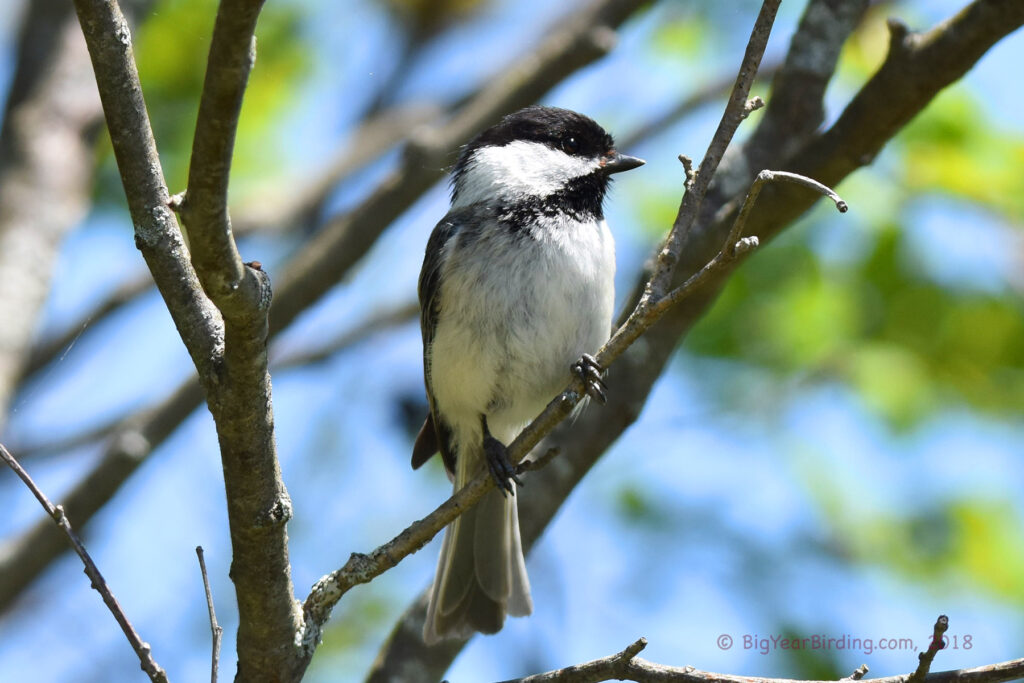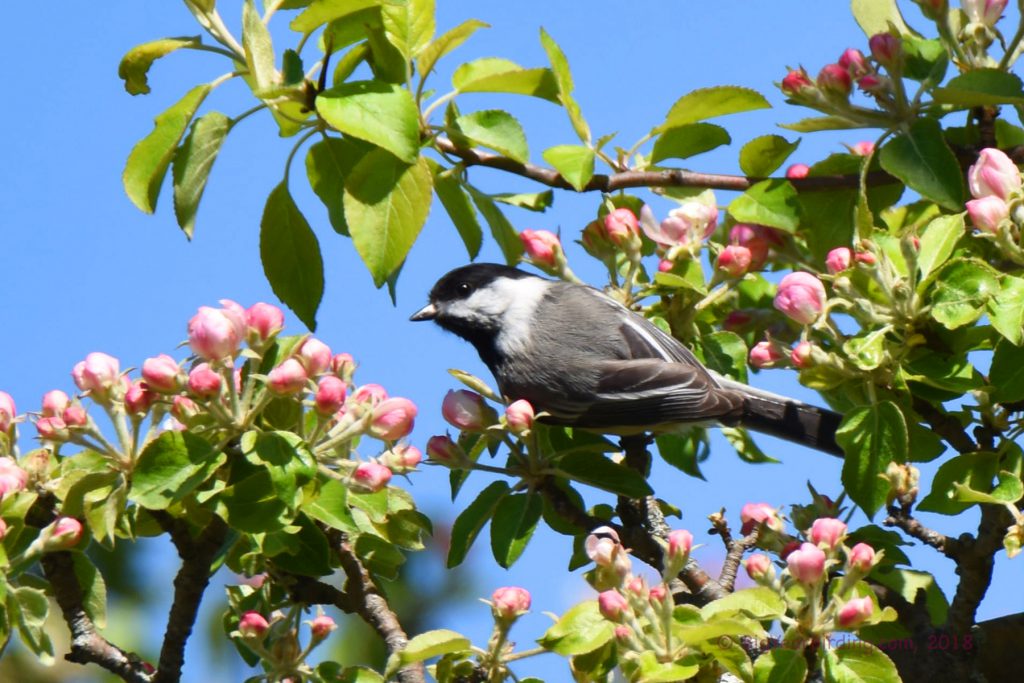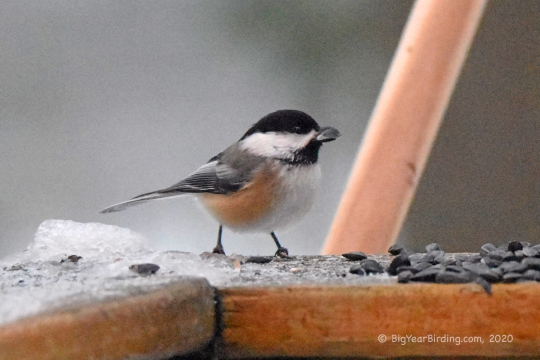
The Black-capped Chickadee (Poecile atricapillus) is a small passerine bird that can be found throughout North America. They measure approximately 4.75-5 inches (12-13 cm) in length and weigh about 0.3-0.4 ounces (9-12 g). Their distinguishing field marks include a black cap and bib, white cheeks, and a gray back with buff-colored sides.

Black-capped Chickadees are non-migratory birds that are well adapted to cold winters. They have a remarkable ability to lower their body temperature at night to conserve energy and keep warm. They can also store food in caches, which they retrieve during the winter months. Their diet consists mainly of insects, seeds, and berries, and they can often be found at bird feeders in residential areas.
During breeding season, Black-capped Chickadees construct their nests in tree cavities, often using natural holes or those made by woodpeckers. The female lays 6-8 eggs, which she incubates for about 12-13 days. The chicks are altricial, meaning they are born naked and helpless and require extensive parental care. Both parents feed and care for the young until they fledge, which usually occurs at around 16-18 days after hatching.
Black-capped Chickadees are a common and beloved bird throughout their range. They are known for their friendly demeanor and their characteristic call, which sounds like “chick-a-dee-dee-dee”. They are also a popular subject for birdwatchers and photographers, who appreciate their distinctive appearance and behavior.

Overall, the Black-capped Chickadee is a fascinating and important species in North American ecosystems. Their small size and adaptability allow them to thrive in a variety of habitats, and their unique behaviors and characteristics make them a joy to observe and study.

